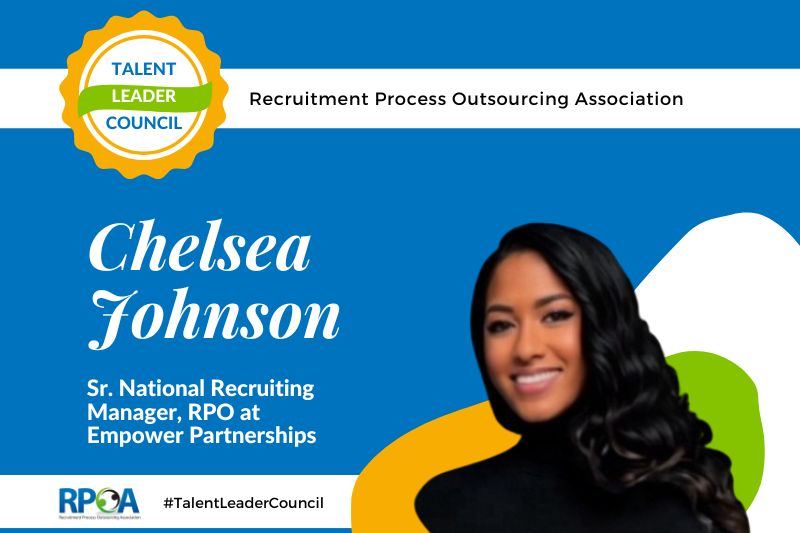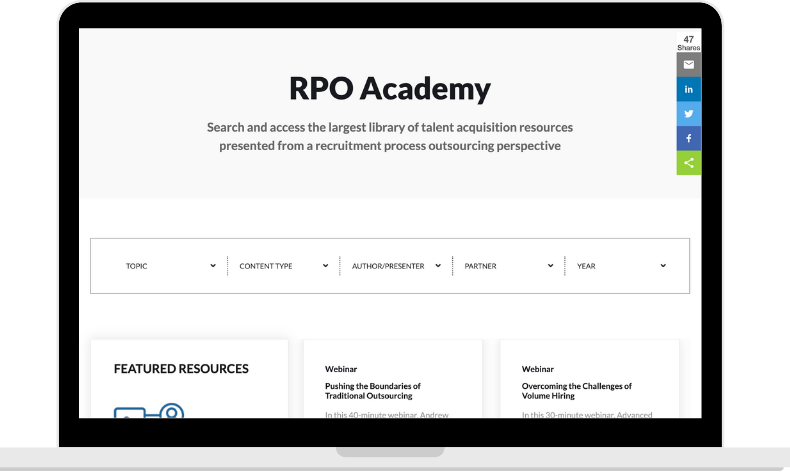-min.jpg?width=800&height=533&name=iStock-1347652268%20(1)-min.jpg)
What if the $92 billion US companies invest annually in outsourcing vendor partnerships actually undermines long-term business success? The American outsourcing market supports 73 percent of organizations through strategic vendor relationships that drive core business functions. Yet outsourcing partnerships grapple with a fundamental contradiction: while strategic partnerships achieve ~90 percent satisfaction rates, 60 percent of companies remain open to switching vendors even when satisfied with current performance. This paradox reveals that traditional vendor management approaches fail to deliver the strategic agility modern businesses demand.
Given this pressure, partnership evolution has become critical for organizational competitiveness. Matt Corbett, President of ZRG Embedded Recruiting, spoke at the RPOA Leadership Forum about strategic partnership development. Along with Corbett, two Symbotic talent acquisition leaders, Martha Bradley, Director of Talent Acquisition, and Alex McGrane, Director of Talent Acquisition Operations, shared essential knowledge about transforming vendor relationships into dynamic partnerships. Their combined experiences provide a roadmap for organizations navigating partnership evolution challenges. This post explores their insights on how strategic partnership management transforms outsourcing relationships through continuous evolution.
Major Takeaways for Business Leaders:
- Evolution Imperative: Partnerships unchanged for over 18 months risk a 40-50% failure rate within two years.
- Integration Strategy: Unified standards for teams achieve ~90% satisfaction, while segregated approaches yield lower rates.
- Trust Framework: Transparent communication during challenges builds stronger relationships than mere wins.
Why Static Partnerships Fail: The Evolution Imperative
Partnership growth drives competitive advantage rather than providing optional benefits. Market dynamics and complexity cause static relationships become obsolete rapidly, with failure rates between 40-50 percent for partnerships that remain unchanged.
Corbett explained that partnerships must adapt continuously. Partnerships that remain unchanged risk losing their strategic value. This view holds that growth enables partnerships to remain relevant.
McGrane shared how their partnership had matured over the past 3 years. Initially focused on volume support, the approach shifted to network access and operational expansion as needs evolved. Bradley described their relationship as "dynamic," while McGrane referred to it as "integrated."
From Transactions to Transformation: The Partnership Evolution Framework
Static vendor relationships can hinder growth during organizational change. The difference between vendors and strategic partners determines whether relationships drive growth or hinder it.
The Symbotic case study highlights this shift. Bradley noted that traditional vendor relationships limit partners to resume delivery. This transactional view constrains potential value creation.
In contrast, Bradley described their integration approach: "With Hub [now ZRG], we invited them to work alongside our recruiting team." This change turned vendors into embedded team members who understand company culture and goals. Bradley emphasized their role in company building rather than candidate delivery alone.
Building Trust Through Transparent Partnership Communication
Trust in partnerships requires transparency that turns potential conflicts into growth opportunities. Traditional methods view problems as threats, whereas strategic partnerships utilize challenges to strengthen trust.
Corbett shared a principle for partnership success. Transparency and honesty in all situations build trust rather than undermining relationships. This approach fosters resilience amid challenges.
McGrane explained their systematic transparency: "We met weekly with ZRG to discuss what good talent looks like." This regular communication helps resolve issues and prevents relationship deterioration.
- Matt Corbett, President at ZRG Embedded Recruiting
Measuring Partnership Success Beyond Traditional Metrics
Traditional vendor metrics focus on deliverables and costs. In contrast, strategic partnerships require metrics that capture depth and adaptability to sustain value.
Corbett described a dual-metric approach combining quantitative and qualitative measures. Hard metrics include SLAs, number of hires, and pipeline needs. Soft metrics cover trust, solution approach, and pricing transparency.
This measurement must adapt to the complexities of partnerships. Bradley noted their flexibility with job offers and candidate profiles shared. This flexibility acknowledges that strategic partnerships require success criteria that align with real business needs.
Partnership Evolution During Rapid Organizational Growth
As organizations scale, partnership complexity increases, demanding adaptable frameworks. Service delivery must grow to meet new demands.
McGrane shared their growth trajectory. Starting with about 500 employees, they now employ nearly 2,000. This rapid growth demanded that their partnership mature through distinct phases.
The evolution included 3 phases. Volume support phase addressed immediate needs with recruiter augmentation. Network access phase used talent relationships for solutions. Operational expansion phase extended the partnership's scope beyond recruitment.
Partnership Innovation: The Payroll Solution
Partnership evolution needs solutions that meet new business demands beyond scaling existing services. The best partnerships find creative solutions through collaboration.
Bradley shared Symbotic's staffing challenge. They had a solid network they wanted to work with, but the company wasn't ready for a large full-time staff. They needed to stay flexible. Traditional staffing methods were unable to solve this problem.
The breakthrough came from partnership innovation. Bradley said the solution emerged from discussions with ZRG leadership. Their recruiters could be payrolled through ZRG Hub as part of the team. This flexible model provided access to talent without requiring full-time roles.
Strategic Implementation: Leading Partnership Evolution
Partnership success needs ongoing investment beyond initial setup and contract negotiations. Organizations that find lasting value view relationship development as operational infrastructure rather than contract management.
McGrane highlighted the need for continuous investment. Once partners are established, organizations must continue to invest in that partnership. Partnership evolution may occur and requires recognition. This mindset treats partnerships as living entities rather than fixed agreements.
Implementation requires systematic approaches that anticipate change rather than resist it. Organizations should hold regular discussions about evolution, create ways to adapt and maintain a flexible scope as complexity grows. The 40-50 percent partnership failure rate highlights the risk of treating partnerships as static arrangements rather than dynamic collaborations.
Creating Unified Standards for Partnership Integration
Partnership excellence requires removing barriers between internal and external teams. Segregated management leads to inconsistencies that limit effectiveness.
Corbett stressed the importance of consistency. KPIs should be the same for both internal and external teams. There shouldn't be separate rules. This unity enables effective partnership integration.
Bradley noted her consistent leadership approach: "I meet weekly with everyone from ZRG, just like I do with full-time employees." This consistency fosters a strong partnership culture.
"They're not just shoving candidates at us, they're actually helping us to build the company. That is a really big difference when somebody is part of our team, as opposed to just filling in resumes.”
- Martha Bradley, Symbotic
The Symbotic-ZRG partnership demonstrates that strategic partnership management requires continuous development rather than static contract management. Organizations achieving 90 percent satisfaction with strategic partnerships share one characteristic: they treat partnership evolution as operational infrastructure rather than relationship maintenance. The transformation from 500 to 2,000 employees and 5 to 30+ operational sites within 3 years illustrates how dynamic partnerships enable exponential growth rather than supporting it.
As partnerships continue to develop, technology integration represents the next frontier. Matt Corbett recently shared insights on how AI transforms recruitment while maintaining human connection, demonstrating how successful partnerships must balance technological advancement with the relationship-building principles explored in the Symbotic case study







-min.jpg)






